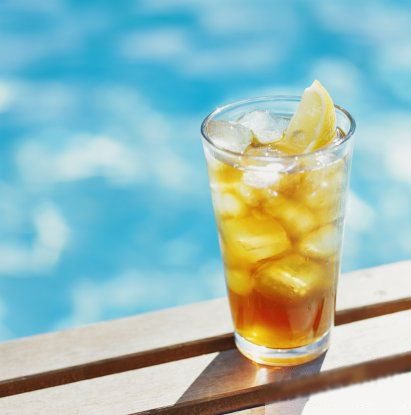What makes up a hydraulic system? Well the simplest hydraulic system has only three parts: The pump, cylinder, and the fluid. Pumps can be of any shape or size. Some pumps are hand or foot driven while more complicated ones can be a turbo or another form of gear type pump. Cylinders can also be of any size as long as it is water tight to prevent fluid leakage.
The fluid can be just about anything, though some fluids do work better than others. In theory, you could use your nice cold ice tea you’re drinking on a hot summer day as a hydraulic fluid since all fluids are nearly incompressible, but I don’t think I would try that. I prefer to drink my ice tea after work is done instead of using it for work. Specially made hydraulic oil is usually the preferred fluid due to its slow heating (hydraulic fluids do heat up due to friction as it moves inside a cylinder) properties compared to water. Remember, it takes only 212 degrees to make water boil while hydraulic oils require higher temperatures before it will boil and fail in a hydraulic system. I have no idea what the boiling temperature of ice tea is though.
Looking at the picture below, you can see all three parts. The “pump” is placing 5 lbs. of pressure on a 1/2 inch area “cylinder” causing the “fluid” to do its work lifting a hundred lb. weight. No matter how complicated a hydraulic system can be, it will always have these three main parts.
Other parts can be added to ensure better safety and control. Parts such as:
- Check valves-To ensure a one way flow in a cylinder.
- Reservoirs – tanks that hold large amounts of hydraulic fluid that can’t all be stored in the cylinder.
- Control valves – allows the operator to direct the flow and supply of hydraulic fluid traveling in the hydraulic system. With a control valve, an operator can actually open the lines to allow the fluid to flow freely and not build up pressure therefore allowing the pumps to stay on but in a neutral state. When work is needed, the control valve is engaged to a closed position causing the pressure to build inside the cylinder and allowing work to be done.
- Relief valve – Probably the most important safety feature in a hydraulic system. Pressures can increase quite quickly in a hydraulic system beyond the structural limits of a cylinder and can cause an explosive failure. Relief valves are designed to open and relive the pressure if it exceeds a certain point it is designed for causing the hydraulic fluid to exit the cylinder and return to the reservoir lessening the pressure and preventing failure. Hydraulic leaks and relief valve malfunctions are probably the most common (and possibly dangerous!) failures an aerospace technician will encounter.
Now that you have had a brief overview of hydraulic systems, go to the refrigerator or break room and get yourself some ice tea. I know you have wanted some for a few paragraphs now.
References:
Hehn, A. H. (1993). Fluid Power Handbook Volume 1: System Design, Maintenance, and Troubleshooting. Houston: Gulf Publishing Company.


